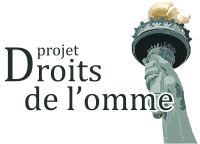I'm a writer at Justmeans in the Health category. I am also currently the Director of Biomedical Research and Development at Gallifrey Systems. I finished my PhD in experimental psychology in 1997 and have worked covering legislative initiatives, building statistical models and in technology development. I'm an expert in the areas of health behavior and health policy. I'm a huge proponent of c... Read More

This is the second part of a three-part series focusing on human trafficking from a public health perspective.
Malaria affects over six million people per year. Worldwide, more than two million individuals are infected with tuberculosis. Each year, there are about two - three million new people who are newly infected with HIV. Each disease is considered a public health problem and is preventable. The World Health Organization estimates that up to four million people are direct victims (captives) or indirect victims (for example, affected by disease or family member loss) of human trafficking. If 16,000 US citizens died from an epidemic, there might reasonably be national outrage. However, 14,500 - 17,500 individuals, including children, are estimated to be illegally brought into the United States per year for the purposes forced labor, among other crimes. It is even more difficult to estimate how many people once within US borders are moved between states and communities without leaving the country. Worldwide, hundreds of thousands of men, women and children are direct victims.
The standard governmental model for handling criminal behavior includes punishment for offenders, protection for victims and despite best intentions, preventive measures come last. Human trafficking is a complex social and economic problem, much like the war on drugs. Similarly, it cannot be stopped by single, law-enforcement focused approach. Criminal law tends to address events after they have occurred rather than through encouraging attitudinal and behavioral change. To abate human trafficking, it might be time to change tactics to put a premium on prevention.
Even if one does not view human trafficking as a public health problem, there are aspects of the model that fit well in this fight. Public health is a unique field among the health professions. There is a focus on populations rather than individuals and prevention rather than cure. It is a scientific, evidence-based endeavor with a firm link to government and politics. Additionally, outcomes of violence prevention initiatives benefit from a public health model, so it seems reasonable to extend this methodology to human trafficking.
Following the model proposed by the Center for Disease Control for preventing violence, there are four steps that must be fulfilled. The root cause of trafficking must be understood. This means a scientific analysis that evaluates individual risk factors, social relationships that increase personal risk, the role of the local environment and community and finally sociocultural standards.
Public health campaigns must bring the problem to a level of social consciousness. According to the report "U.S. Awareness of Human Trafficking: Executive Summary of Survey Findings", most Americans are quite unaware that the United States is affected. Individuals, communities and non-governmental organizations can, if motivated, provide government officials with feedback about what efforts work well for the local population, what resources are necessary and generally guide lawmakers on how government can effectively intervene rather than government blindly and unwisely throwing resources at the problem.
Finally, at the level of personal responsibility, each person should be able to see how even small actions can help ameliorate the issue of human trafficking. Just in the same way that people learn how diligent hand-washing and how to properly "cover and cough" can help prevent the spread of colds and the flu, small efforts can make a difference. The next posting in this series examines one person's efforts to raise awareness about the problem of human trafficking and how to combat it.
Image courtesy of Antonu
Human Trafficking as a Public Health Crisis: Part 2 | Health


